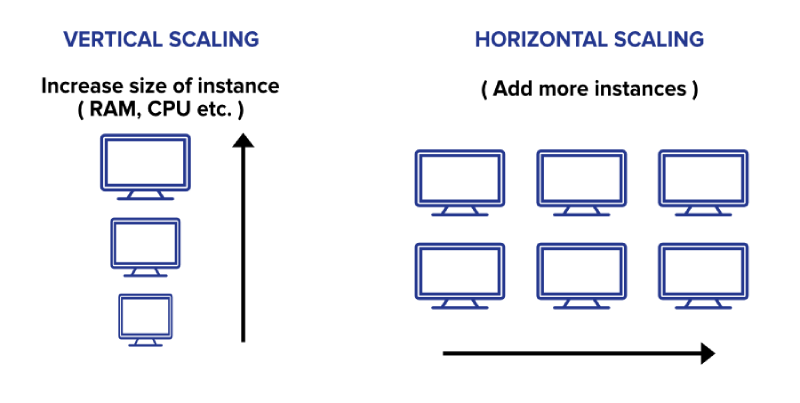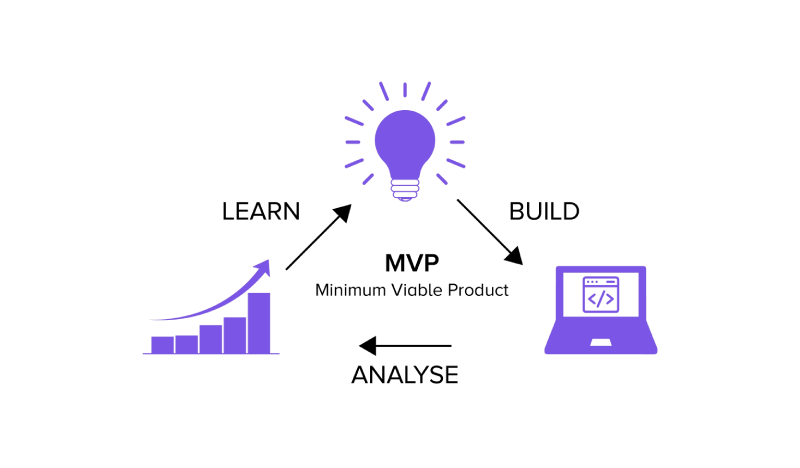Imagine this: A world-class chef is only as good as the principles behind their recipes. They bring harmony to an array of ingredients, creating a masterpiece every time. Now, think of software development. It’s not just code—it’s a banquet of clean code practices, design patterns, and Agile methodology laid out for success.
But why bother fussing over software development principles, you ask? Well, it’s simple. In the digital age, they’re your navigation chart through the vast sea of programming possibilities.
They steer your projects towards efficiency and away from the treacherous waters of costly do-overs.
Hang tight; we’re about to dive deep into the essence of crafting exceptional software. From SOLID principles to the nuances of refactoring techniques, you’ll emerge with a clear compass to guide your code creations.
Expect a journey through the backbone of high-quality software architecture to the subtleties of test-driven development.
Embrace these principles, and watch the transformation begin. Your code, your rules, your software development principles coming to life.
Introduction of Software Development Principles
Put Your Customer Expectations on the Top of Your List
This means understanding the needs of the customer and anticipating their wishes. At the same time, it’s about delivering a product or service that meets their needs. By keeping the customer in mind, you can create a deliverable tailored to the market.
Keep Things Simple
When programming new or existing code, you should use a modern programming language. It should be easy to read and modify, but also efficient. Hence, you should be able to process large amounts of data fast. Additionally, you should know how to pair it with existing software platforms.
The code should be structured, organized, and broken down into small, manageable chunks. That way, you can easily apply new changes or modifications. Therefore, ensure to document all updates for future reference.
Learn From Past Mistakes
By following a certain set of software development principles, software engineers can improve their workflows. The core concept of the Pragmatic Programmer revolves around the idea of “code craftsmanship”. That is the belief that software development is an art. So, it should be approached with the same attention to detail as any other craft.
It is important to have consistency in the codebase, but it is not necessary to have a single source point. For example, you can consider refactoring the code at times. As a result, the overall logic method will remain at a single, centralized hub. This will make it easier for software systems to be maintained and updated. Additionally, you should also consider automating as many steps as you can.
S.O.L.I.D Principles
The S.O.L.I.D is a set of principles used for enriching the software development proceedings.
- SRP (Single Responsibility Principle): A class should have one, and only one, reason to change.
This single responsibility means that it should not follow other tasks.
- OCP (Open/Closed Principle): The software should be open for extension, but closed for modification.
This means that while you should not modify the existing code of the class, you can still evolve it. This approach allows for the existing code to be reused and makes it easier to maintain and debug in the future.
- LSP (Liskov Substitution Principle): Derived classes should be substitutable for their base classes.
So, a subclass should be able to completely replace its superclass. The application should still work as expected. In other words, the behavior of a program should not change when using a subclass instead of its superclass.
- ISP (Interface Segregation Principle): Make fine-grained interfaces that are client specific.
The ISP is one of the main software engineering principles. This method states that clients should not be forced to depend on methods they do not use. Instead, small and specific interfaces should be created to serve clients’ needs. This helps to avoid bloated interfaces and improves the code’s quality.
- DIP (Dependency Inversion Principle): Depend on abstractions, not on concretions.
Abstractions should not depend on details; details should depend on abstractions. This principle is an important concept in software engineering and software design. It helps to ensure that changes to the implementation of a module do not affect other modules. It also helps to maintain a layered structure.
High-level modules are not dependent on low-level modules, and both are dependent on abstractions. This helps to reduce the complexity of the system. It makes the same code more stable and reusable.
Contractual Design Principles
This software design principle includes the type of input it needs and the type of output it will produce. Also, the logic it needs to get from input to output, and any other features. Having a clear understanding of this routine will help you develop the necessary logic.
Using this approach also helps keep the code organized and well-structured for future use. Use this principle to write code in a more practical manner.
Conway’s Law
This law is based on the idea that the software development process is shaped by the organizational structure of the team. In other words, the software that is developed will reflect the team’s internal core.
What Is Modularity?
Modularity enables a software developer to break down a large, complex task into smaller, lighter parts. Next, you can work on them as a separate function. Later, you can again combine them with minimal effort.
Modularity allows for code reuse, easier debugging, and other technical details. By separating the program into distinct sections, it is easier to understand and manage it.
Evade Untimely Optimization
Overall, developers prefer to write easy, secure, and clear code for the entire software structure. However, the cost of over-optimization can be significant. So, it is possible to spend a lot of time and effort optimizing code entirely in vain.
Additionally, over-optimized code can be difficult to maintain and debug. Therefore, it is important to balance the need for optimization with the cost of maintenance.
What Is Refactoring?
Refactoring is one of the basic software design principles. It is a software solution that integrates improvements without changing its functions. Refactoring is not the same as creating new features or debugging.
However, it can make an existing code simpler, cleaner, and more efficient. This process is often used to update any poorly written code.
Demeter Principle
The Principle of Least Knowledge is another name for this approach. It states that an object should only interact with those closest to it. This reduces the coupling between objects and helps keep the program operational. The Demeter principle helps to ensure that objects are well-encapsulated and that classes are reusable.
What Is Fail Fast?
The principle states that if errors are detected, the software must shut down. This helps in quickly identifying the errors and rectifying them. It also helps in reducing development time and overall costs.
Scalability Principle

This principle helps you to adapt and scale to fit the needs of your customer base. By following this principle, you can save yourself time and effort in the long run.
The YAGNI Implementation
YAGNI is an important concept for software development. It encourages developers to focus on the most essential features.
Additionally, it also helps developers to avoid writing code that would be only used once.
The Minimal Viable Product Doctrine

The MVP is important because it allows you to get feedback quickly. It also makes it easier to test the market and see if the product has potential.
By focusing on the core features of the product, you can ensure its final form will attract new customers.
How to Test Your Product?
Generally, you need to test for both functionality and compatibility. That also includes various devices and operating systems.
Additionally, double-test for any vulnerabilities that could compromise its security.
Secure the App
When setting up a distributed system, it is important to establish secure authentication.
This includes setting up strong passwords, multi-factor authentication, and access control lists. It’s essential to descope sensitive data from the distributed system by using a reliable solution like Descope, which helps reduce the scope of PCI DSS compliance and minimize the risks of data breaches.
Self Description
When code is written, the comments should be brief and comprehensive. As a result, the code itself will become the primary data directory.
FAQ On Software Development Principles
What are software development principles?
They’re the backbone, the secret sauce. Guiding software from idea to launch, they include concepts like DRY, SOLID, and the Agile Manifesto. Think of them as the unwritten rules that shape our coding cosmos, geared to pump out stellar software and dodge the dreaded code chaos.
How do principles like DRY and SOLID improve software development?
DRY keeps you from redundancy; you write less but do more. SOLID? It’s like good bones in architecture – ensures your code stands strong, adaptable, and oh-so-maintainable. Together, they’re a dynamic duo that prevents the jumble of spaghetti code.
Why is the Agile methodology significant?
Agile’s not just a buzzword; it’s a game-changer. Breaks down projects into bite-sized bits. Frequent checks, rapid adaptability, customer-focused – it’s like a GPS for project detours. Agile keeps teams and goals aligned, delivering value quicker and more efficiently.
Can software development exist without principles?
Sure, like a wild garden. But without principles? It’s a maze of guesswork and hiccups. Principles inject order, predictability, efficiency. Without them, you’re coding blind, and who wants that?
What is the role of testing in software development?
Testing? It’s the gatekeeper of quality. Unit tests, integration tests – they’re your safety net, catching bugs before users do. It’s an essential dialogue between the developer and the code: constant, meticulous, and non-negotiable.
How do design patterns contribute to software development?
Design patterns are the blueprints of the coding world. They provide tested solutions to common problems – like a playbook for developers. Apply them, and you’ve got yourself a head start towards a robust, scalable application.
Is documentation really that important in coding?
Absolutely. It’s like the manual for your software. Without clear documentation, it’s a wild goose chase for anyone trying to understand or build upon your code. It’s a lifeline for teams and vital for software sustainability.
How does refactoring affect software quality?
Refactoring is the art of code hygiene; it’s about cleaner, more efficient structures without altering the end game. Regular refactoring keeps your codebase spick and span, ensuring long-term health and fewer headaches.
What distinguishes good software architecture?
Good architecture is like the foundation of a skyscraper. It needs to be robust, scalable, and flexible. It ensures that your application doesn’t just survive but thrives as it evolves and grows.
In what ways are software development principles evolving?
Just like tech, principles evolve. The shift leans towards AI, machine learning integrations, and more focus on security from the get-go. Principles today are about foreseeing change, being ready to pivot, and embracing the tech horizon. We’re building smarter, not just harder.
Conclusion
So, we’ve ventured through the intricate tapestry of software development principles, weaving in and out of the practical strings that tie the craft together. We’ve seen the sturdy pillars of SOLID, felt the rhythm of Agile, and embraced the clarity that clean code practices bring to the table.
It’s been a ride, huh? A continuum from the spark of system design principles to the finesse of refactoring techniques that polish our work until it shines. The conclusion’s clear as glass: Ignoring these fundamentals isn’t just shooting in the dark; it’s a one-way ticket to a digital house of cards.
Remember, it’s these principles that whisper the secrets of turning functional into phenomenal. Stick to them, and that code won’t just run; it’ll sprint—leaping right off the screen. Here’s to crafting software that doesn’t just live up to standards but sets them. Now, go on and make those zeroes and ones dance to your tune.
If you enjoyed reading this article on software development principles, you should check out this one about business pivot examples.
We also wrote about a few related subjects like how to hire a web development team, software development budget, financial projections for startups, financial software development companies, IT outsourcing failures, and software development outsourcing trends.
- Transit’s Lost Leap: What Happened to Leap Transit? - April 20, 2024
- Crafting the Perfect App Description to Engage Users - April 20, 2024
- Ultimate Streaming: Entertainment Apps Like Kodi - April 19, 2024









